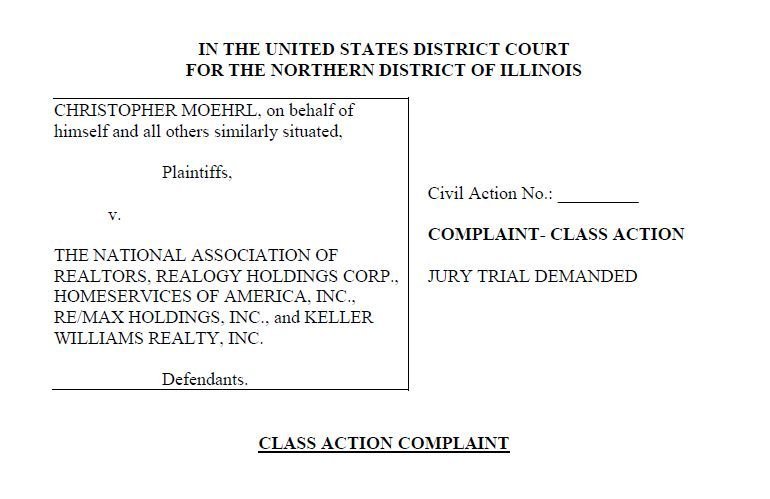Checking Out Course Activity Lawsuits: What You Need to Know
Class activity legal actions have become significantly common in today's lawful landscape, with individuals signing up with forces to look for redress versus corporations and companies. In this discussion, we will certainly explore the ins and outs of course action legal actions, dropping light on their interpretation, the demands for declaring, and the potential advantages and drawbacks entailed.
The Definition of Course Action Legal Actions
A course action claim is a lawful action filed by a group of individuals who have similar claims versus an accused. Class action lawsuits are usually brought when the number of prospective plaintiffs is too large for individual legal actions to be practical.
Among the crucial elements of a course action suit is that the lead plaintiff, also called the class representative, stands for the passions of all the course members. The court designates the lead plaintiff based upon their capability to relatively and effectively stand for the class. The lead complainant functions carefully with the class activity lawyer to seek and construct a solid case settlement or various other treatments on behalf of the whole course.
In order for a class activity claim to proceed, the court should certify the course. This indicates that the court identifies that the claim meets particular needs, such as numerosity (a big sufficient number of course participants), commonness (typical questions of law or reality), typicality (the cases of the lead plaintiff are normal of the class), and adequacy of depiction (the lead complainant and course advise are qualified of standing for the class's passions) When the class is licensed, the claim can move forward, and any kind of judgment or negotiation reached will use to all class participants unless they select to opt-out.
Class activity suits offer a vital objective in offering accessibility to justice for individuals who might not have the resources to pursue their insurance claims independently. They also advertise efficiency in the legal system by consolidating similar cases into a solitary action, lowering the concern on both the court and the events involved.
Needs for Filing a Course Action Lawsuit

One more requirement is that the course must be sufficiently various. The precise number of class members required may vary depending on the territory and the nature of the situation. It is usually anticipated that the class should be large enough that signing up with all the specific complainants right into a solitary suit is a lot more effective than having several different suits.
Furthermore, it is vital that the class representative, who is the private or entity bringing the legal action on behalf of the class, has common claims and defenses to those of the class members. The agent has to additionally be able to appropriately and fairly represent the interests of the entire class.

Advantages and Downsides of Course Activity Lawsuits
Course activity lawsuits use both benefits and downsides for complainants and defendants involved in the legal process. On the one hand, one of the considerable benefits of course activity lawsuits is that they provide a effective and cost-effective way for individuals with similar insurance claims to pursue justice collectively. By consolidating numerous similar situations right into one legal action, course activities enhance the lawful procedure and conserve time and resources for both accuseds and plaintiffs.
One more advantage of class action legal actions is that they enable people with limited sources to seek payment for their problems. In cases where the possible recovery is tiny, individual legal actions may not be financially practical. However, by signing up with pressures in a class activity, plaintiffs can merge their resources and raise their possibilities of obtaining a reasonable resolution.
In addition, course activities can promote social modification by holding firms accountable for their activities. By accentuating prevalent misconduct or defective products, class actions can press companies to alter their practices, enhance item security, or apply reforms.
However, course actions likewise have downsides. One potential disadvantage is that private plaintiffs might have restricted control over the litigation process and the utmost end result of the case. The lead plaintiffs and their lawyers typically make vital decisions on part of the entire course, which might not always align with the private interests of each course member.
Furthermore, course actions can be prolonged and lengthy, often taking years to reach a resolution. The intricacy and size of these suits over here can cause hold-ups and long term litigation, which can be frustrating for both complainants and accuseds seeking a prompt resolution.
Actions Associated With a Class Activity Suit
The process of a course action legal action normally begins with the identification of a prospective class and the declaring of a problem. Once a team of individuals that share similar cases against an offender is determined, the lead plaintiff, or course representative, submits a grievance in behalf of the entire course. This problem outlines the supposed wrongdoing and looks for damages or various other relief for all participants of the course.
After the complaint is submitted, the court will determine whether the instance meets the requirements for course accreditation. These demands generally consist of numerosity (a huge adequate class), commonality (similar lawful insurance claims), typicality (the lead plaintiff's claims are depictive of the course), and adequacy of depiction (the lead plaintiff and their attorney can appropriately stand for the class's interests)
If the court licenses the course, notification is supplied to all prospective course participants, offering them the chance to opt-out if they want to seek their own individual claims - Archer-Daniels-Midland class action lawsuit. If an enough number of class participants continue to be, the case will certainly continue to the discovery stage, where both sides gather proof and information pertinent to the insurance claims
Following exploration, the parties may take part in settlement arrangements or proceed to test. If the situation mosts likely to trial and the course prevails, the court will certainly figure out the appropriate problems or relief to be granted to the class members.
Recent Landmark Class Action Suits
With a solid understanding of the steps involved in a class activity lawsuit, it is now important to examine some recent spots cases that have actually made a substantial influence in the lawful landscape. Assertio class action lawsuit. These instances have not just shaped the way class activity legal actions are performed however have actually likewise produced modifications in various industries
One such landmark case is the Volkswagen emissions rumor, which led to the biggest course activity settlement in automotive background. This deception affected millions of customers worldwide, leading to a course activity legal action.
Another notable case is the imp source Johnson & Johnson talcum powder legal action. Thousands of ladies filed lawsuits against the business, asserting that their talcum powder products caused ovarian cancer.
These current landmark situations show the power of class action claims in holding firms responsible for their actions and looking for justice for damaged people. They serve as examples of how course activity legal actions can produce significant modifications and secure the civil liberties of customers.
Verdict
In conclusion, course action suits are a legal mechanism that permits a team of individuals to jointly look for justice for a common grievance. Comprehending the requirements and steps included in filing a course action lawsuit is essential for individuals looking for to pursue this legal method.
One of the crucial components of a course action lawsuit is that the lead complainant, likewise known as the course agent, represents the passions of all the course participants.In order for a class activity suit to proceed, the court has to accredit the course. This indicates that the court identifies that the lawsuit satisfies certain needs, such you could try these out as numerosity (a big adequate number of class participants), commonality (typical questions of regulation or truth), typicality (the claims of the lead complainant are typical of the class), and adequacy of representation (the lead plaintiff and class advice are capable of standing for the class's passions) When the class is accredited, the claim can relocate onward, and any type of judgment or negotiation reached will apply to all course members unless they select to opt-out.
The procedure of a course action claim generally starts with the recognition of a potential course and the declaring of a complaint.
Comments on “Assertio Class Action Lawsuit: Insights into Class Action Lawsuits”